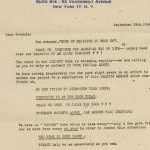After just six years under the Articles of Confederation, a committee of anxious delegates agreed to meet in Philadelphia to amend the government. The country was in an economic crisis — citizens couldn’t pay their debts, the government couldn’t really collect taxes, and rebellions were cropping up in states across the nation. The existing government had the potential to drive the country to ruin. So fifty-five men gathered to determine the shape of the new United States.
The document that emerged after that summer of debate was littered with masterful planning, strange ideas and unsavory concessions. The delegates decided they’d be pleased if this new government lasted fifty years. It has been our blueprint for over two centuries now. This is the story of how our Constitution came to be.
This short episode includes a one-page Graphic Organizer for students to take notes on while listening, as well as discussion questions on the back side.
How Your State Gets Its Seats – Congressional Apportionment
The United States Senate consists of how many members? The answer is fairly simple: with two members apiece representing each of the fifty states, the total is one hundred. How about the House of Representatives? The answer is much more complicated. There are currently 435 voting members of the House of Representatives. How did this number come about and how is the number of Representatives per state determined?
America and Red Scare

The Cold War was sparked by the immediate aftermath of World War II. The Allied Forces were divided by ideology and quickly separated into two camps: the Western democracies, led by the United States, and the Communist nations, dominated by the Soviet Union. This alignment served as the basic framework of the Cold War over the next fifty years, from 1947-1991. As America positioned itself in opposition to totalitarian regimes, American citizens were forced to confront realities of what “freedom” meant, or should mean.
“Father” of Our Country v. “Father” of the Bill of Rights
At the Constitutional Convention in Philadelphia, delegates analyzed, argued, and debated the new Constitution. George Mason, a Virginian, pleaded with the fifty-five delegates for the inclusion of a list of guaranteed rights. Mason (sometimes referred to as the “father of the Bill of Rights”) wanted the new Constitution to guarantee freedom of speech, press, and religion, and the right to a fair jury trial. He also wanted to include the freedom to vote.
Constitution Day Scavenger Hunt with 60-Second Civics
Fifty-five delegates attended the Constitutional Convention in Philadelphia in 1787. Most students can identify George Washington or James Madison. But what about the 53 other delegates? Who were they? How did they influence the convention? In this lesson, students will familiarize themselves with the delegates by listening to a series of 60-Second Civics podcast episodes devoted to the Framers of the Constitution.